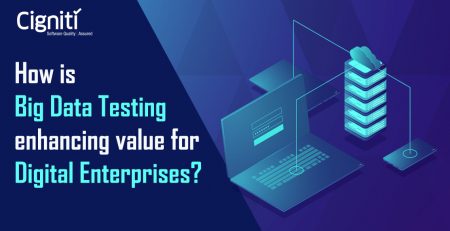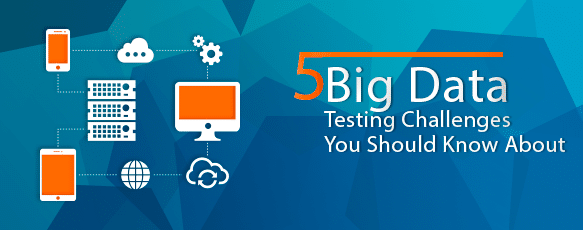Harness the power of Big Data in Retail
Retailers are vying furiously to expand their share of the customer’s wallet in a market plagued by poor economic growth and expensive costs.
Retailers are seeking to increase efficiencies and cut costs while operating within narrow single-digit percentage margins.
Winning in this climate has become much more difficult due to the advent of a new generation of digital customers who demand convenience, personalization, and promotion-based pricing.
Innovative trends linked with digital customers, such as mobile commerce, e-commerce, and social media, have resulted in a plethora of data stored in social media communications, emails, blogs, videos, and phone calls.
Enterprises face a huge problem with processing such large and diverse data sets in order to better understand customer behavior.
According to recent studies, this difficulty will continue to expand in future years.
Across their supply chain and at numerous customer touch points across omni-channel operations, retailers produce massive amounts of data.
Simultaneously, today’s digital customer and social media experiences are fueling a vast data explosion.
For retailers, analyzing this massive amount of Big Data has significant potential.
Big Data in Retail
Retailers are finding that traditional database management technologies can’t handle the power of Big Data.
The retail business demands solutions that may assist them in gaining access to this customer and product data, understanding, and playing with customer behavior trends, and ensuring their continued relevance and survival in a highly competitive market.
The system must be able to quickly acquire and analyze this large amount of data from many sources, as well as generate near-real-time insights and analytics, in order to enable quick decision-making and generate actual commercial value.
They can maximize the potential of these disruptive developments and prevail in the competitive marketplace by utilizing innovative technologies to interpret this data.
This data deluge is both an opportunity and a liability for retailers, but only if they can make sense of it.
While consumers expect customization, they anticipate a seamless experience across online and offline platforms. They’ll go to a different retailer if they can’t quickly make a purchase.
Retail merchants wanting to boost sales and customer happiness can use retail analytics and merchandising analytics to solve these issues.
What is Retail Data Analytics
The technique of using big data to optimize pricing, supply chain movement, and customer loyalty is known as retail analytics.
Big data means a better understanding of customer experience, buying behaviors, and how to acquire new consumers for the retail industry.
Retailers may use big data analytics to offer personalized shopping experiences and improve customer service by creating customer recommendations based on their purchasing history.
These massive data sets also aid in trend predictions and strategic decision-making based on market analysis.
Loyalty programs are one of the most popular ways that big data is collected in the retail business.
Credit card transactions, IP addresses, user log-ins, and other methods are now used to collect data.
Retailers can utilize market insights to evaluate the ebb and flow of purchasing and spending by consumers historically, anticipate future spending and create personalized recommendations as more data is acquired.
Businesses could only trace what a person bought and when until the cloud became widely available.
Companies can collect a variety of information on their clients using more advanced technologies, such as their age, geographic area, gender, favorite restaurants, and other places they buy at.
To gather and manage that data, retailers have turned to cloud-based big data solutions.
Cloud based Big Data Solutions for Retail
Many merchants have not yet shifted their data processing to the cloud for a variety of reasons. Many organizations have built up decades of legacy systems, including data processes that may have taken years to design.
Connecting these on-premise systems and processes to new data infrastructure in the public cloud has proven difficult.
While it used to be a large technological difficulty to move some or all data processing to public clouds (e.g., Amazon Web Services, Microsoft Azure, etc.), new big data services have made projects easier and more cost-effective for businesses.
Initial security concerns have dissipated, with experts today claiming that cloud infrastructure providers have more experience and controls than ever before, especially when compared to self-managed data centers.
Incorporating cloud-based data processing capabilities allows retailers to adapt quickly to market changes, fosters deeper customer relationships, and typically results in significant cost savings and operational efficiencies.
Retailers can’t afford to wait for big data on the cloud when there’s so much money to be made.
Shifting “data gravity” to the cloud is one of the most compelling reasons for moving processing to the cloud.
While much of a retailer’s data used to be generated on-premise in offices or storefronts, large amounts are now processed in the cloud.
Since most of the retailer’s data used to be created on-premise in offices or storefronts, it is now administered in the cloud in enormous quantities.
Alternatively, analytical access to a new dataset could inspire staff to come up with new ideas.
Every enterprise is unique. To many, the cloud may allow for the rapid delivery of a novel new feature. Others may benefit from the cloud’s ability to automate important operating tasks.
Cloud data processing is a strategic boon to agility. Thanks to automation, flexibility, and cloud services, a new cloud data infrastructure may be installed in minutes.
Building a new infrastructure in a datacenter, on the other hand, is a big undertaking that involves in-house knowledge, hardware, and months of integration and optimization.
The cloud expedites project completion and improves corporate outcomes. While there are vast benefits to Big Data in retail, it is imperative to have robust Big Data testing in place.
Why is it important to have a good strategy for Big Data Automation Testing
A big data testing strategy is necessary in a number of areas in Big Data. Database testing, infrastructure and performance testing, and functional testing are all sorts of testing used in Big Data initiatives.
Big data automation testing enables you to evaluate performance under a variety of scenarios, such as testing the application with various types and volumes of data.
One of the most significant big data testing methodologies is performance testing, which guarantees that the components involved have effective storage, processing, and retrieval capabilities for massive data sets.
The big data testing plan should contain tests that focus on how ingested data is processed and evaluate whether or not the business logic is executed appropriately by matching output files to input files.
QA testers can utilize big data automation testing technologies to ensure that output data is properly loaded into the warehouse by comparing output data to warehouse data.
Data Migration Testing is also a sort of big data software testing that follows data testing best practices whenever an application is moved to a new server or a new technology is introduced.
Data migration testing ensures that data migration from the old to the new system is completed with little downtime and no loss of data.
While it is important to include all the aforementioned tests in your Big Data automation testing strategy, it comes with a set of challenges.
Big Data Testing challenges
It’s normal to have difficulties while testing unstructured data, especially if you’re new to using tools in large data scenarios.
Here are some of the challenges encountered while testing Big Data applications –
- Many companies currently store exabytes of data in order to run their operations. This massive amount of data must be audited by testers to ensure its accuracy and usefulness to the business. Even with hundreds of QA testers, manual testing of this volume of data is difficult.
- A considerable rise in workload volume can have a major influence on the big data application’s database accessibility, processing, and networking. Despite the fact that big data applications are built to handle massive amounts of data, they may not be able to handle massive workload demands.
- It’s difficult to handle test data when your QA testers don’t understand it. When it comes to transferring, analyzing, and preserving test data, tools used in big data scenarios will only take your team to an extent within the big data system.
To overcome these challenges, it is vital to harness the capabilities of Big Data Testing.
Overcoming the challenges of Big Data Testing
The importance of automation in big data testing cannot be overstated. In fact, data automation technologies are made to check the accuracy of large amounts of data.
Assign QA engineers who are experienced in developing and running automated tests for big data applications.
The following testing approaches should be included in your data testing methods:
Techniques for Clustering: Distribute enormous amounts of data evenly across all cluster nodes. These enormous data files can then be readily divided into smaller bits and stored on various cluster nodes. Machine reliance is reduced by replicating file pieces and storing them on other nodes.
Data Partitioning: This method of big data automation is less complicated and easier to implement. Data partitioning allows your QA testers to do parallelism at the CPU level.
To begin, your QA team should work closely with your marketing and development teams to understand data extraction from various sources, data filtering, and pre-and post-processing techniques.
Make sure your QA engineers that are in charge of running test cases through your big data automation solutions are appropriately trained so that test data is constantly maintained.
Many organizations may claim the benefits of implementing a big data testing strategy from one big data testing case study to the next. Because big data testing is intended to locate qualitative, accurate, and undamaged data, this is the case.
Benefits of Big Data Testing in Retail
To achieve reliable results within the set timetable and budget, comprehensive testing on large data necessitates specialist knowledge.
Only a dedicated team of QA experts with considerable experience in testing big data apps, whether an in-house team or outsourced resources, can provide you with the best practices for testing big data applications.
Here are some of the benefits of Big Data Testing in the Retail Industry –
Having a full overview of each client – By knowing each individual on a scale, you can provide the kind of personal connection that customers have grown to expect.
Streamline pricing – Make the most of incoming trends by determining when and how much to reduce off-trend product prices.
Data Accuracy – For business planning, forecasting, and decision-making, every business aims for accurate data. In any big data application, this data must be evaluated for accuracy.
Business Strategy and Effective Decision-Making – The foundation for critical business choices is accurate data. It becomes a good characteristic when the correct information reaches the hands of genuine people. It aids in the analysis of all types of risks, bringing only the data that contributes to the decision-making process into play, and ultimately becoming a valuable tool for making informed judgments.
Simplify back-office operations – Imagine sustaining ideal stock levels throughout the year and real-time data collection from registered products.
Superior customer service – Identify customer service data hidden in recorded calls, security footage from in-store events, and social media comments.
Reduces Deficit and Increases Profits: Due to the difficulty of determining the cause and location of errors, faulty large data has become a major business flaw. Accurate data, on the other hand, benefits the entire firm, including the decision-making process. Testing such data separates the useful data from the unstructured or incorrect data, resulting in improved customer service and increased revenue.
Big data analysis can be used to forecast new trends, target the right customer at the right time, lower marketing expenses, and improve customer service quality.
Closing thoughts
Data and Analytics have become the core DNA around which organizations are transforming towards digitalization. Using Big Data Analytics, companies across the globe are trying to uncover insights about their customers, business models, products, and operations.
Most of this information coming from multiple channels requires reformatting, data validation, and extensive conversion before it can be used.
With a focus on achieving superior data quality, Big Data and Analytics Testing services ensure complete validation of all structured, semi-structured, and unstructured data.
Cigniti’s end-to-end testing methodology addresses overall Big Data & Analytics Testing requirements, including test data needs, metrics definition, and tooling.
Our Big Data & Analytics Test Automation solutions help organizations pick the best model for their business needs and generate test reports on the efficiency and effectiveness of predictive analytical models.
The offerings from Cigniti Big Data Testing Practice include Requirements Ambiguity Testing, Data Quality and ETL Testing, DW Dashboards/Reports Testing, System and Integration Testing, Performance and Stress Testing, and BI Application Usability Testing. Our value-adds are Custom Test-lets for Consumer Partitioning & Social Indexing, and Test and Process Templates.
Consult our experienced team of experts to overcome your challenges related to big data testing, data migration testing, data analytics testing, and big data performance testing, and harness the power of Big Data in the Retail Industry.





Leave a Reply